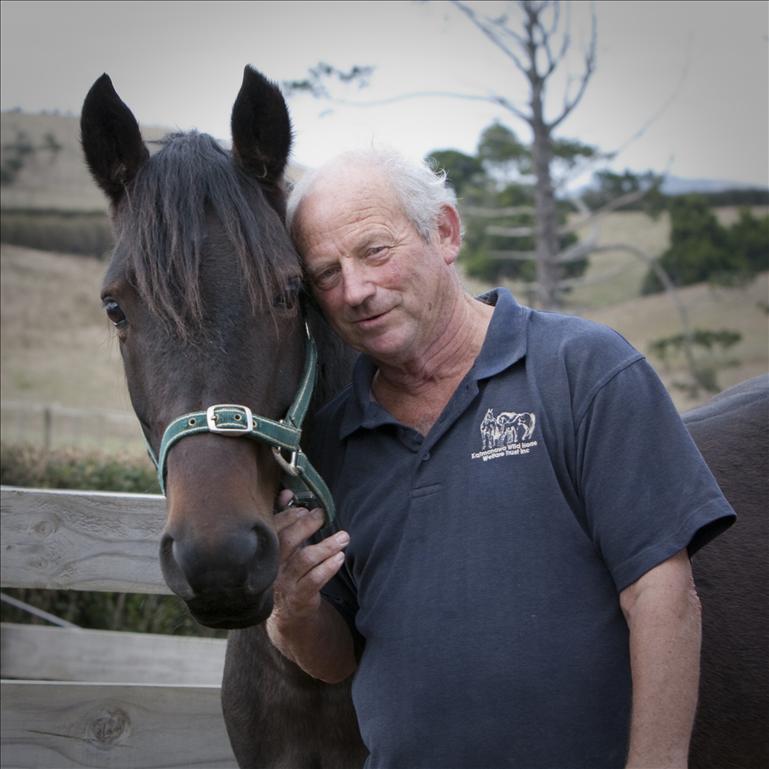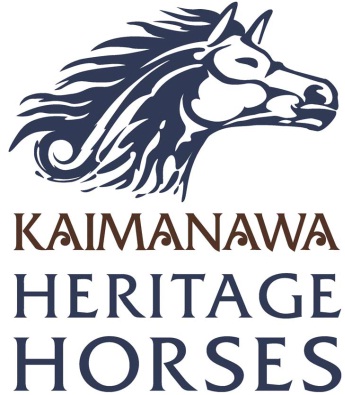We are not an authority on horses but we are aware that they excite millions of people around the world as they run in races, making the latter rich and famous. But there is another ‘human’ aspect to horses that is sparsely understood, leave alone appreciated.
Our interest on the subject of ‘preserving, promoting and caring’ for these second best friends of humans was kindled last fortnight during an informal conversation with APN Print Limited (printers of Indian Newslink) Business Development Manager Marilyn Jenks.
Annual slaughter

 The fact that up to 90 horses (Kaimanawa breed alone) are slaughtered every year was heart-rending, prompting us to learn more about the issue, and importantly, if there was a way of stopping this despicable practice.
The fact that up to 90 horses (Kaimanawa breed alone) are slaughtered every year was heart-rending, prompting us to learn more about the issue, and importantly, if there was a way of stopping this despicable practice.
Incredible it may seem, the Department of Conservation (DOC) was determined to eliminate these horses, since they purportedly posed a threat to New Zealand’s ‘rare eco systems.
The only way to prevent the slaughter is to ensure that every horse secures a home with the best possible care of ‘loving parents,’ like Marilyn and her husband Elder.
While Mrs Jenks has had a long association with horses, Mr Jenks evinced interest as they moved to Pukeoware (about 65 kms from Auckland City Centre) in 1995, with the acquisition of ‘Holly,’ a young Kaimanawa filly.
The couple are so dedicated to conservation of the environment on the one hand and the Kaimanawa horses on the other that they have worked hard to strike an intelligent and acceptable balance between the two.
Charitable Trust
They established the ‘ Kaimanawa Heritage Horses (KHH) Inc,’ a charitable trust that has no government funding but finances are mobilised through membership, sponsorships and fundraising programmes.
“The Kaimanawa horses breed in the wild at 22% rate every year. Hence, every two years, we have to remove about 180 horses, half of which are slaughtered due to insufficient homes. We do not promote breeding Kaimanawa horses in captivity when so many wild horses go to slaughter,” Mrs Jenks said.
She hoped that ‘immune conception’ would be introduced to achieve better population management and avoid ‘breeding to slaughter.’
According to Mr Jenks, raising and starting horses was a part of the rural lifestyle and that many in the region had become owners of Kaimanawa horses.
Code of Practice
KHH has brought together a number of families, which owned Kaimanawa horses and evolved a code of practice for potential owners.
“Facilities, level of expertise and commitment are carefully assessed with the result that re-homing and welfare disasters are avoided.”
Members of the KHH Committee regularly attend meetings with the DOC, the Council and the local iwi to ensure sound management of the horses.
KHH and organisations such as the ‘Kaimanawa Wild Horse Preservation Society’ are eager to promote the need for proper homes for the horses, but there are limits to what individuals can do; the efforts need to expand to others so that Kaimanawa horses do not face the threat of extinction.
“We handle inquiries about Kaimanawa horses and about those in trouble. We have a dedicated welfare team that uplift unhandled horses, rescue them and try to find them a home. Such efforts cost at least $3000 per horse,” Mrs Jenks said.
Educating youth
 She agrees that just like agriculture and dairy farming, the future of Kaimanawa depends on the younger generation.
She agrees that just like agriculture and dairy farming, the future of Kaimanawa depends on the younger generation.
“They will decide the future of the Kaimanawa horses in the coming years. KHH encourages children to take an active interest in the horses. Many of our younger members are also riders,” she said.
Mrs Jenks recently found a new home in Keri Keri for ‘Matariki,’ a five-year-old horse captured in the 2010 muster.
After 12 months in the Jenks’ farm, the now gelded horse. Known after the Maori New Year, he will surely miss his masters at KHH.






